A seafood delicacy is now becoming an instant hit, not only among the locals who live in the coastal communities of Surigao del Sur, but also to those who have heard and tasted the delicious and tasty Tikod Amo.
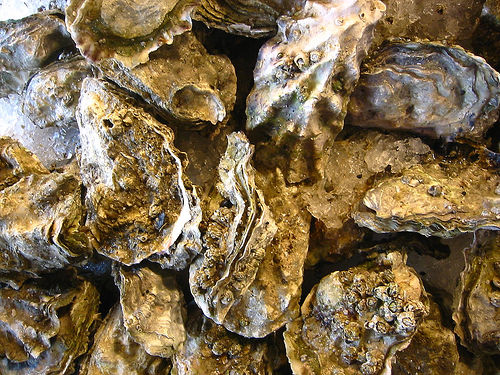
Tikod Amo is the name given to an endemic oyster species by the people living in the Barobo Coastal waters in Lianga Bay, Surigao del Sur. This unique oyster got its name because its adductor muscle resembles that of a monkey’s heel.
According to Gemma A. Asufre, researcher from the Surigao del Sur State University (SDSSU) this oyster species seems to be unknown in the international species nomenclature database as no information that describes its biological features is to be found. Hence, it was assumed that “Tikod Amo” is a new species under genus Spondylus.
The researcher from SDSSU is trying to determine its species identification as this is crucial in the culture of this endemic species. Tikod Amo is even aesthetically attractive with the five colors of its internal parts. Its closest relative is Spondylus squamosos with a mere five percent difference in DNA to Tikod Amo.
Unknown to many, this endemic oyster species is said to be delicious and tasty making it a favorite seafood delicacy among the locals. Catching Tikod Amo has also become a good source of income among the marginalized fishers in the coastal areas of Surigao del Sur.
Given its high local demand, the price of Tikod Amo is higher than the price of any ordinary oyster meat available in the market. Its current price in the local market is about P400 per kilo for the unshelled meat. With such demand, production cannot adequately supply the local hotels and restaurants.
Internationally, it is also gaining popularity. Among the foreigners who came to know about this rare oyster species, Tikod Amo has become a hit following curiosity about its distinct taste. In fact, Asufre revealed that “Koreans and Chinese who come to the Philippines to buy sea cucumber for export are also willing to import Tikod Amo if there’s a supply. One interested supplier wanted to buy at least 300 kilos per week.”
With the increasing demand for Tikod Amo and the constant harvest, the natural stock of this oyster in the wild is now being threatened. Also, the practice among gatherers of collecting spat (baby oysters) from the wilds is not sustainable and it poses a threat, not only to the diversity of oyster species in the area, but also to the hard coral substrates where these species naturally dwell. As a result, the oyster catch has declined by 40 to 60 percent between 2006 and 2008.
To further mitigate the possible direct impact of this practice on the environment, the potential of Tikod Amo as an oyster species was studied particularly on the sustainability of its production. Hence, the project titled, “Preliminary Study of Tikod Amo on its Potential as an Oyster Culture Species” was implemented by SDSSU with funding support from the Bureau of Agricultural Research (BAR). The study, initiated in 2008 and completed in 2010, was led by Asufre and Miguel O. Baay, assistant regional director of the Bureau of Fisheries and Aquatic Resources (BFAR), CARAGA.
One of the important results that the study generated is the culture technology of Tikod Amo. Asufre said that, “Aquaculture of Tikod Amo offers a great opportunity for learning about its biology and may produce the key to restoring depleted areas.”
One of the key recommendations of the group of Asufre is the use of “bottom polyculture” in the culture of Tikod Amo.
Polyculture is the practice of raising more than one species of aquatic organism in the same pond. The motivating principle is that fish production in ponds may be maximized by raising a combination of species having different food habits. The polyculture of fish is based on the concept of total utilization of different trophic and spatial niches of a pond in order to obtain maximum fish production per unit area. The mixture of different fishes gives better utilization of available natural food produced in a pond. The compatible fish species having complimentary feeding habits are so stocked that all the ecological niches of pond ecosystem are effectively utilized (Singh, 2013).
Compared with monoculture system of fish production, the possibilities of increasing fish yield per unit area through polyculture is considerably higher and more profitable. Also, combining different species in a polyculture system effectively improves the pond environment.
“For growing Tikod Amo, we recommend the bottom polyculture. It’s culturing the oyster at the bottom of the pond. We grow these oysters together with seaweeds and fishes like milkfish, grouper, and siganid in the mariculture areas of Barobo Bay,” explained Asufre.
The integration of oysters in a polyculture system may be applied in 146 hectares of fishpens in the mariculture zone.
According to Asufre, this kind of culture system will not only increase the production of Tikod Amo, together with other species, but it will also expand employment among both mariculture fishermen and oyster gatherers. ###
———-
For more information on Tikod Amo and its culture technology, please contact Ms. Gemma A. Asufre, Surigao del Sur State University (SDSSU) through mobile no. 0946-333-0229 or email: gaasufre13@gmail.com
References:
1. Asufre, Gemma A. (2012). Preliminary Study of Tikod Amo on its Potential as an Oyster Culture Species. Unpublished Terminal report submitted to DA-BAR.
2. Singh, Prabjeet, et al. (2013). “Polyculture – A culture practice to utilize all ecological niches of pond ecosystem effectively.” Aquafind: Aquatic Fish Database. Retrieved from: http://aquafind.com/articles/Polyculture.php Retrieved on: 11 March 2013.
Source: Rita T. dela Cruz, BAR Digest April-June 2013 Issue (Vol. 15 No.2)
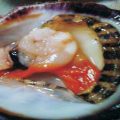

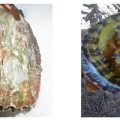
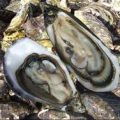

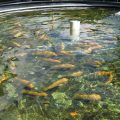

hi